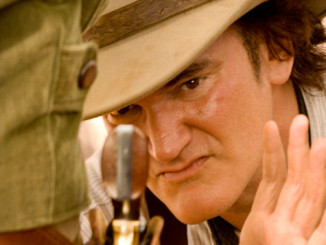 Yesterday on National Public Radio’s Morning Edition, they did a short piece on product placement in the media. And while the report focused on television shows and how, thanks to various methods that viewers now have to avoid watching commercials, advertisers are taking a bigger role in the production of certain shows to get their product and their message in front of viewers, it got me to thinking about product placement in film. Specifically, one example that sprung to mind was the furor that arose when a bottle of Coca-Cola becomes an important part of one scene between Tom Hanks and Rita Wilson in the comedy Volunteers. The film’s co-writer Ken Levine recently talked about the controversy on his blog By Ken Levine –
Yesterday on National Public Radio’s Morning Edition, they did a short piece on product placement in the media. And while the report focused on television shows and how, thanks to various methods that viewers now have to avoid watching commercials, advertisers are taking a bigger role in the production of certain shows to get their product and their message in front of viewers, it got me to thinking about product placement in film. Specifically, one example that sprung to mind was the furor that arose when a bottle of Coca-Cola becomes an important part of one scene between Tom Hanks and Rita Wilson in the comedy Volunteers. The film’s co-writer Ken Levine recently talked about the controversy on his blog By Ken Levine –
In interviewing former Peace Corps volunteers we learned that Coca Cola was one of the things they missed most, especially if stationed in a hot jungle… We wrote that Coke scene in the first draft, 1980. It stayed in every draft and wound up on the screen. Originally the movie was set up at MGM. After a couple of years it went into turnaround, finally landing at HBO Silver Screen in partnership with Tri-Star. This was 1984. Tri-Star was a division of Sony, as was the Coca Cola company. No one from the studio ever asked that that scene be in. No one from the studio ever mentioned that scene period.
A year later the film was released and we walked into a major shitstorm.
Ironically, Coke ran came under similar fire over blatant product placement in the 1987 flop spy comedy Leonard Part 6, which, not-so-coincidentally starred the soda company’s longtime pitchman Bill Cosby. That time, though, the placement was indeed intentional. It should come as no surprise that Leonard Part 6 was released by Columbia Picture, a wholly owned subsidiary of Coca-Cola.
Of course, there are some directors who have created a work around by establishing their own fictitious brands for their films. Famously, Quentin Tarantino has Red Apple cigarettes while Kevin Smith’s films feature Nails cigarettes and the fast-food chain Mooby’s.
But for the most part, I don’t mind when real world products appear in films. Providing it isn’t too distracting or obvious, seeing brand name products can add an air of verisimilitude to a movie. Growing up in the 1970s, I started to notice that when anyone drank a beer on a television show, it was almost invariably from a generic, brown plaid can. This ultimately became more distracting than if they were popping open a can of Budweiser or Schlitz.
Now granted, things in film have not become as bad as it appears to have in television. While there is product placement, and as Morgan Spurlock’s film The Greatest Movie Ever Sold showed us, it is becoming too integral to the financing of a film to go anywhere. But as long as studios don’t start putting the cart before the horse, or at least are upfront about it when they do, I don’t see product placement ever being a real problem.




